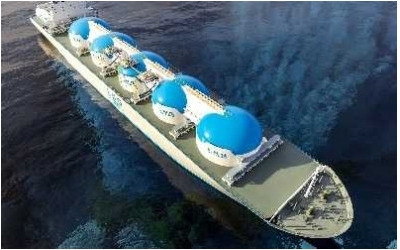April 09, 2021

The energy sector is a massive industry with a wide variety of professionals in different roles – which means there are always opportunities to meet people and build your network. In the energy sector, strong and positive relationships are vital. The value of improving your network is in building relationships and creating a community of people in the same industry. It’s all too easy to take a passive approach and expect our network to develop on its own, but professionals with strong networks make the effort to connect and reach out to new people. There’s a range of ways to build new relationships and create a quality network. The below tips will help you make the most of your network in the energy sector.
Connect on LinkedIn
Over the years, LinkedIn has become one of the best tools for networking. In building your network, you want your LinkedIn profile to be diverse and focused, with connections to people in the energy sector or to people who have expertise. If you’re just starting on LinkedIn or haven’t been concentrating on it, send connection requests to people with a personalised message to introduce yourself and add context. When it comes to networking, you should also try to engage and reconnect with old contacts, rather than relying on strangers. These contacts can be an excellent way to re-establish a relationship and support each other’s careers.
One of the best ways to make your LinkedIn profile stand out is by asking for a recommendation from people you have worked with, as well as engaging with other people’s posts. It’s not enough to simply add people to your network. Interacting with your connections and engaging regularly by sharing valuable content will help you build stronger relationships with the energy professionals in your network. Linked Jetpack has outlined a few different examples of recommendations in a blog post, which shows the value of having other people vouch for your skills and success. Recommendations show that you’re a trusted and well-respected professional, and they’re a great way of maintaining relationships.
Attend industry events
Industry events and conferences provide an excellent opportunity to expand your network. At these events, you’ll have the chance to meet like-minded people and engage with industry leaders. In the energy sector, there’s a wide range of industry events that professionals can attend. For example, the Society of Petroleum Engineers is the largest member organisation for oil and gas professionals worldwide, and they advertise several different events and training courses, bringing professionals together from all around the world. Furthermore, one of the most well-known oil and gas events is the Offshore Technology Conference, which is sponsored by 13 different associations, including the American Society of Civil Engineers and the American Association of Petroleum Geologists. Attending events, whether in person or virtually, can connect you with key influencers. Also, you can always reach out to people in your network and ask if there are any relevant events or groups to attend. That way, you’ll be able to learn about new groups regularly.
Start a networking group
Alternatively, another way to expand your network is by starting a group of your own and inviting people who might be interested in joining. The key benefit of starting your group is that you’re immediately being positioned as a leader and a specialist in your industry. Networking is all about collaborating and sharing knowledge to help others, and it’s always an opportunity to develop your interpersonal skills. However, it’s important to know that the best networking groups have specific aims. For example, starting a group for young professionals in the energy sector increases the chances of your networking group having a more meaningful impact because it will have a specific focus. Therefore, your networking group must have a clear objective and be grown carefully over time.
Consistent communication
Within your network, you need to communicate with people consistently to maintain and strengthen relationships. It’s critical that you follow up after initial conversations at networking events through email or LinkedIn, once you’ve taken a business card. Continuing the conversation after a business event is something people often overlook, but it’s key to developing a long-lasting relationship. When following up through email, you need to make sure you mention something memorable from the event or the previous conversation. Discuss each other’s career goals and ask about any relevant projects your new connection may be working on. The key to successful networking is maintaining a valuable, ongoing dialogue that’s mutually beneficial.
Are you actively improving your network?
Building your network is essential for the growth of your career. At Petroplan, we have an excellent team of consultants who understand the importance of consistently building your professional network. As a specialist talent and workforce solutions business, we’ve established strong relationships with both clients and candidates. If you’re interested in finding out more about networking in the energy sector, contact Roxy Hohls and Lizzie Verbeek or get in touch with our wider team today.






You can also use your social account to sign in. First you need to:
To connect your social account you must Acknowledge the Terms & Conditions and Privacy Policy